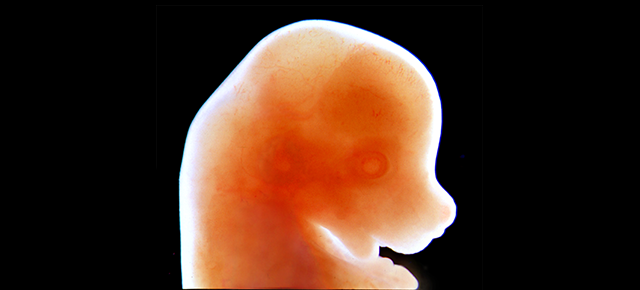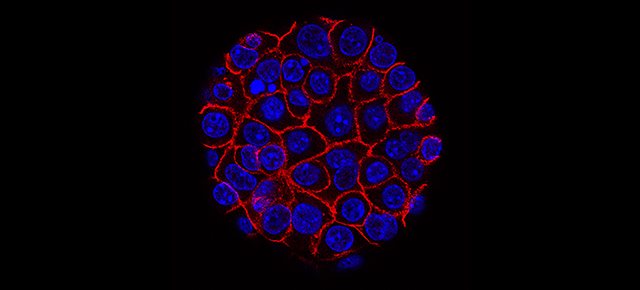Machine learning assists in predicting risk of stroke

Some patients with advanced heart failure can benefit from the support of a continuous-flow left ventricular assist device (CF-LVAD) to sustain heart function. However, despite improvements managing complications associated with the use of CF-LVADs, stroke continues to be a major adverse event after the implantation of the device.

“Early detection and management of post-CF-LVAD strokes is crucial for improving outcomes. Our goal in this study was to identify a way to predict the risk of future strokes that may occur after CF-LVADs implantation,” said co-corresponding author of the work Dr. Nandan Mondal, assistant professor in the Michael E. DeBakey Department of Surgery at Baylor College of Medicine.
Previous studies have shown that mitochondria, cellular structures that provide cells with the energy they need to conduct their activities, play a vital role in stroke. Specifically, reduced levels of OxPhos mitochondrial proteins in white blood cells have been associated with disease severity.

“In the current study, published in ASAIO Journal, we investigated whether the levels of OxPhos in white blood cells could help predict the risk of stroke after CF-LVAD implantation,” said first author Jacob P. Scioscia, a medical student at Baylor conducting research in the Mondal lab.
Scioscia learned about the project in Baylor’s SOAR database. SOAR – the Office of Student Opportunities for Advancement in Research – is dedicated to educating and supporting BCM medical students in pursuing research opportunities.
“Dr. Mondal was looking for students with a background in machine learning. I have knowledge in this area and the project was in cardiothoracic surgery, a field I am interested in,” Scioscia said.
It looked like a good opportunity to gain experience in basic science research and meet experts in the field.”
Using machine learning to make sense of data
The team studied 50 CF-LVAD patients; 25 had a stroke before implanting the device, and 25 did not. “We took blood samples from all the patients before and after CF-LVAD implantation and measured different OxPhos proteins in white blood cells,” Scioscia said. “These generate large amounts of data. We used machine learning modeling to analyze the data and identified six prognostic factors that predicted postimplantation stroke. A reduction on OxPhos proteins appeared to be associated with a new stroke after implantation.”
“We found that, both before and after CF-LVAD implantation, the group with a prior stroke had lower levels of OxPhos proteins than the group without a prior stroke,” Mondal said. “In the group with a prior stroke, OxPhos levels were lower after CF-LVAD implantation than before.”
The study shows for the first time the existence of mitochondrial dysfunction in white blood cells of patients with congestive heart failure who had a stroke, even before CF-LVAD implantation. “The findings suggest that changes on OxPhos proteins could serve as indicators, predicting new post-CF-LVAD strokes,” Scioscia said.
“It was exciting to work with Dr. Mondal and the other lab members combining experimental results with machine learning to detect with high reliability the likelihood of stroke progression from OxPhos proteins,” Scioscia said. “I believe the research that Dr. Mondal is conducting has the potential to change the standard of care for these patients.”
“Many factors can contribute to the risk of stroke after CF-LVAD implantation. This study represents one step toward the discovery of stroke indicators. We are currently studying others,” Mondal said. “We are continuing this research with a larger group of patients for a longer follow-up time to determine whether our results are widely applicable.”
This approach would give physicians and surgeons a means to anticipate complications and implement interventions before CF-LVAD implantation,” Mondal said.
Other contributors to this work include Ivan Murrieta-Alvarez, Shiyi Li, Zicheng Xu, Guangyao Zheng, Jason Uwaeze, Carl P. Walther, Zachary Gray, Katherine V. Nordick, Vladimir Braverman, Alexis E. Shafii, Gabriel Loor, Camila Hochman-Mendez, Ravi K. Ghanta, Subhasis Chatterjee, O Howard Frazier, Todd K. Rosengart and Kenneth K. Liao. The authors are affiliated with Baylor College of Medicine, Rice University and the Texas Heart Institute.
The study was supported by a Faculty Research Grant from Baylor College of Medicine and BCM-INSTINCT and Rice University ENRICH Grants to Dr. Mondal.
Follow From the Labs on X @BCMFromtheLabs and Instagram!



